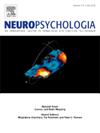脑损伤严重程度与梦停止和噩梦的关系。
IF 2
3区 心理学
Q3 BEHAVIORAL SCIENCES
引用次数: 0
摘要
大脑中内侧额叶和颞顶叶区域在高和低梦回忆者之间的活动不同,病变研究发现,这些区域受损的患者会停止做梦。本研究通过评估停止做梦、做梦和噩梦频率与头部创伤诊所患者受伤严重程度的关系,扩展了这些发现。52名受试者(M=36, F=16;平均年龄= 39.69,SD = 13.72)完成了一份评估做梦、噩梦和夜惊频率的问卷,抑郁和焦虑测试,以及神经心理学检查和测试电池。34.6%的患者报告说他们不做梦,这与Solms(1997)在他的脑损伤样本中发现的34.9%相当。与此形成对比的是,普通人群中不报告梦境的比例为6.1%至7.1%。根据格拉斯哥昏迷量表和创伤后失忆症的测量,停止做梦的参与者明显有更严重的脑损伤,但停止做梦与神经心理学评分无关。与一般人群相比,每周做噩梦的比例更高(13.5%),从不做噩梦的比例也更高(48.1%),前者与焦虑有关,后者与脑损伤严重程度有关。这些数据无法区分脑损伤是导致梦停止产生,还是导致醒着时无法对梦进行编码和回忆。未来使用睡眠行为或成像方法的研究可能会区分这些可能性。未来的研究还应该确定梦的恢复是否预示着脑损伤的更全面的恢复。本文章由计算机程序翻译,如有差异,请以英文原文为准。
The association of brain injury severity with dream cessation and nightmares
Mesial frontal and temporoparietal brain areas differ in activity between high and low dream recallers, and lesion studies have found cessation of dreaming in patients with damage to these areas. This study extends these findings by assessing the relationship of dream cessation, and dream and nightmare frequencies, to severity of injury in patients at a head trauma clinic. 52 participants (M = 36, F = 16; mean age = 39.69, SD = 13.72) completed a questionnaire assessing frequency of dreams, nightmares and night terrors, tests for depression and anxiety, and a neuropsychological examination and test battery. 34.6 % of patients reported that they do not dream, which is comparable to Solms' (1997) finding of 34.9 % in his brain injury sample. This contrasts with the rate of not reporting dreams in the general population of 6.1–7.1 %. Dream cessation participants had significantly greater severity of brain injury as measured by the Glasgow Coma Scale and post traumatic amnesia, but cessation was not related to neuropsychological scores. Compared to the general population there was a higher prevalence of weekly nightmares (13.5 %) and also of reporting never having nightmares (48.1 %), the former predicted by anxiety, the latter by brain injury severity. The data cannot distinguish between whether brain injury is halting the production of dreams or causes failure to encode and recall dreams on waking. Future studies using within-sleep behavioral or imaging methods may distinguish between these possibilities. Future studies should also determine if recovery of dream experience is predictive of more global recovery from brain injury.
求助全文
通过发布文献求助,成功后即可免费获取论文全文。
去求助
来源期刊

Neuropsychologia
医学-行为科学
CiteScore
5.10
自引率
3.80%
发文量
228
审稿时长
4 months
期刊介绍:
Neuropsychologia is an international interdisciplinary journal devoted to experimental and theoretical contributions that advance understanding of human cognition and behavior from a neuroscience perspective. The journal will consider for publication studies that link brain function with cognitive processes, including attention and awareness, action and motor control, executive functions and cognitive control, memory, language, and emotion and social cognition.
 求助内容:
求助内容: 应助结果提醒方式:
应助结果提醒方式:


